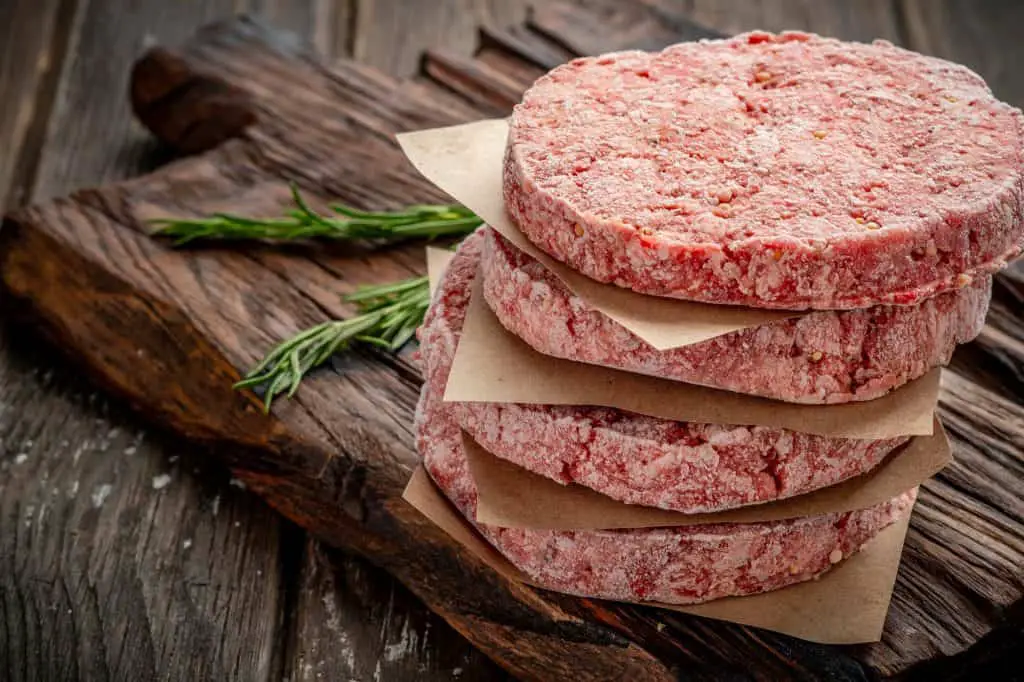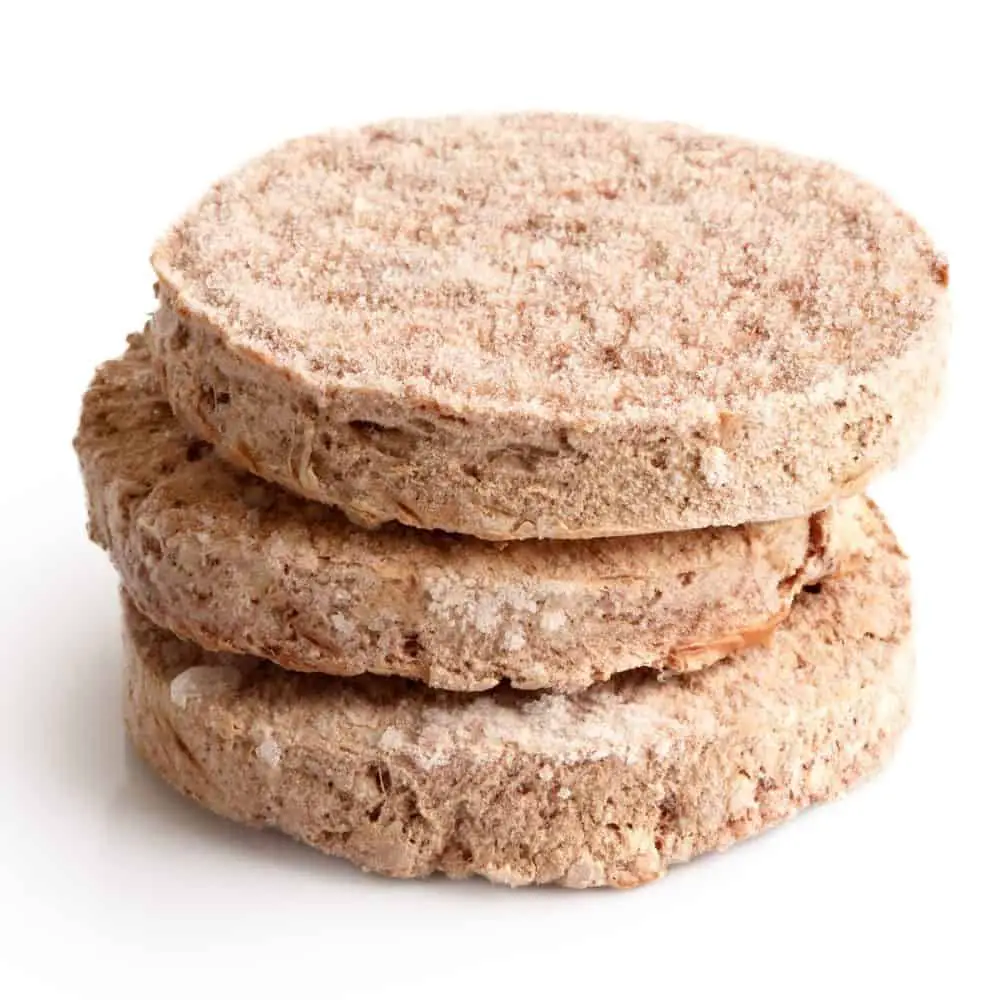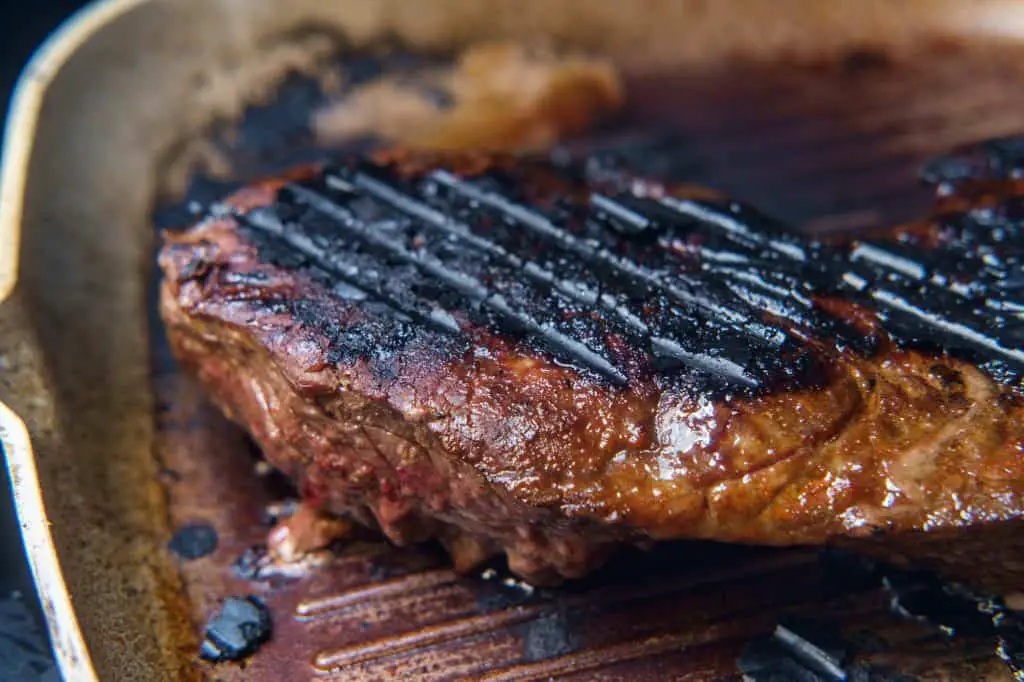I will always take the opportunity to throw down a couple of patties on the grill. When I make freshly made hamburger patties, I make it a habit to put a batch in the freezer so they’re always ready to go. Yes, you absolutely can grill burgers straight from frozen, but there are important differences in how you can prepare and cook them that will make all the difference.
Let’s break down the right way to grill frozen burger patties.
Can You Cook Burgers From Frozen?

You can absolutely cook burgers from frozen, even straight out of the freezer. When you cook a burger pattie from frozen, no doubt it’s going to take longer, but it will still end up juicy, evenly cooked, and delicious.
Granted, cooking a frozen burger pattie is not the same as cooking a fresh pattie. There are several key differences in how you grill frozen burgers to really get the best out of them and avoid any burning or overcooking.
How To Grill Frozen Burgers The Right Way
You can’t grill a frozen burger the same way you would grill a regular hamburger pattie. You’ll end up with an unevenly cooked (or raw), dry, and a sad excuse for a pattie. From preparation to temperatures to timing, grilling frozen burgers will take a slightly different kind of love. Here’s a step-by-step guide to cooking frozen burgers the right way.
Prepare The Patties

First things first, separate the patties from one another using a butter knife or spatula. Seasoning your patties with salt and pepper or your desired seasoning is a must. But, the more frozen the meat the harder it will be for the seasoning to adhere and be absorbed. To counter this, always season generously and lightly press it into all sides of the pattie.
Thawing the patties is optional. But, it will help the meat take on the seasoning more easily and cook more quickly. If you’re wanting to partially thaw the patties before it’s go-time, the easiest ways are:
- Leaving them in the refrigerator for a day.
- Leaving them in a lukewarm water bath in airtight plastic.
- Placing them in the microwave doing short bursts on defrost.
Prepare Your Grill
Everyone loves the sear marks on grilled foods. While it might be tempting to crank up the heat, when grilling frozen patties it’s going to lead to a burnt and unevenly cooked disaster. This is because as the outside cooks and caramelizes, the inside remains frozen. By the time the middle is cooked perfectly the outside will be far overdone, dry, and disappointing.
Instead, go for medium heat, around 350-400°F. If you’re using a charcoal grill, add slightly less charcoal than you would for thawed patties, this will help keep the heat down and more consistent. You can always add more charcoal while cooking.
Time To Grill
Once you’ve reached your desired heat, place your patties on the grill, evenly spaced out with plenty of room being careful not to overcrowd the grill. Unlike when grilling raw or thawed patties, you’re going to be flipping your frozen patties often to ensure they are cooking evenly. Once every 3-5 minutes until you’ve reached your desired temperature of at least 160°F as recommended by the USDA.
Once the patties are almost cooked now is the time to turn up the heat to make sure we are getting those amazing sear lines to add flavor and to look restaurant quality. If you’re using a gas grill you can set up one of the burners on high, if you’re using charcoal, set up a heat zone and transfer them over just before they’re done for 1 minute per side.
If you want extra seasoning place some on the patties and gently press it into the meat before flipping them for the first time. If you’re using a gas grill beware of your hot spots and move the patties around accordingly.
Serve Up
Once you’re satisfied with the patties & they’ve reached at least 160°F you can serve them just like any other burger. Place them on toasted buns with lettuce, cheese, tomatoes, and onions, or let your guests choose their favorite toppings. Get creative by experimenting with different ingredients like blue cheese, bacon jam, fried eggs, you name it.
For sides, you can go with the classic French fries or try grilled vegetables for a healthier alternative. You can even pair your burgers with comfort foods like fried potatoes or macaroni and cheese. Nothing beats a beer and a burger, but other summer drinks like iced tea or margaritas go down a treat too.
What Temperature To Grill Frozen Burgers
Because your burgers are frozen, naturally the outside will begin to defrost and cook before the inside has fully defrosted at all. If you grill the patties on too high of a temperature (exceeding 500°F) then you risk burning the outside before the inside is at your desired doneness. On the other hand, if you leave the temperature too low (under 300°F) the burger is going to take too long to cook, and you won’t get glorious grill marks, caramelization, color, and most importantly: flavor.
A medium heat between 350-400°F will be your sweet spot.
How Long To Grill Frozen Burgers
Depending on the size of your patties you may need to be cooking them for 20-45 minutes from frozen. The most important thing is to flip them every 3-5 minutes to help them cook evenly, and only take them off once they’ve reached at least 160°F. You can absolutely repeat this process for any ground meat pattie, whether it’s a chicken, beef, lamb, or turkey burger.
Mistakes To Avoid When Grilling Frozen Burgers
Flare-Ups
When you’re cooking, some parts of the grill tend to get hotter than others it’s just natural. If your burgers have a lot of fat, the drippings can also cause a flare-up. A flare-up is a sudden fire that can leave your meat burnt, blackened, and bitter if left unattended.
To reduce the risk of flare-ups, move your burgers around the grill instead of letting them sit in a concentrated area of heat. You should also clean your grill on a regular basis to prevent fats and oils from congealing on the grate.
One of the most effective ways to prevent flare-ups is to use ceramic briquettes on a gas grill. They distribute heat evenly to eliminate hotspots too!
Burning the Meat

Frozen meat might be colder than thawed meat, but that doesn’t mean it won’t burn. You could accidentally burn the meat if you let the temperature get too high or keep it in the same place for a long period of time. You might also burn your meat if you don’t flip it often enough to cook both sides evenly. Staying attentive and aware is the key to a perfectly cooked burger.
The same can be said for cooking any frozen meat. It’s always much more likely to overcook on the outside, and still be undercooked on the inside, like when smoking frozen chicken wings for example.
Improper Thickness
If your burgers are too thick when you place them on the grill, they might not reach safe internal temperatures before the outside is already cooked perfectly. You might try to compensate by leaving your burgers on the grill for a longer period of time, but the outside might overcook while the inside stays pink and raw.
If they’re thicker than a normal pattie just dial the heat down 50°F and make sure you’re always closing the hood so that the heat also cooks the top of the patties.
Otherwise, you’re able to flatten your burgers while they’re on the grill to make them cook faster by pressing down slightly with a spatula every time you flip them. However, making your burgers too thin won’t result in the perfect burger either, as it’s much more likely to become dry.
Too Little Seasoning
Although it’s much harder to season your frozen hamburger patties, that doesn’t mean that you have to forgo seasoning all together. You can add sauces and seasonings as your burgers thaw on the grill to create the perfect home-cooked flavor. The spices will stick to the meat once it’s thawed a bit so a little extra never hurts.


2 thoughts on “How To Grill Frozen Burgers – The Right Way”
Good info. Thanks for the tips. It jarred my memory. I have a built in forgetter.????
This weekend will be my first attempt at grilling my own burgers, except as a cook at restaurants. I’m a bit apprehensive, but the only way to learn is by trying. Thanks for the great info.